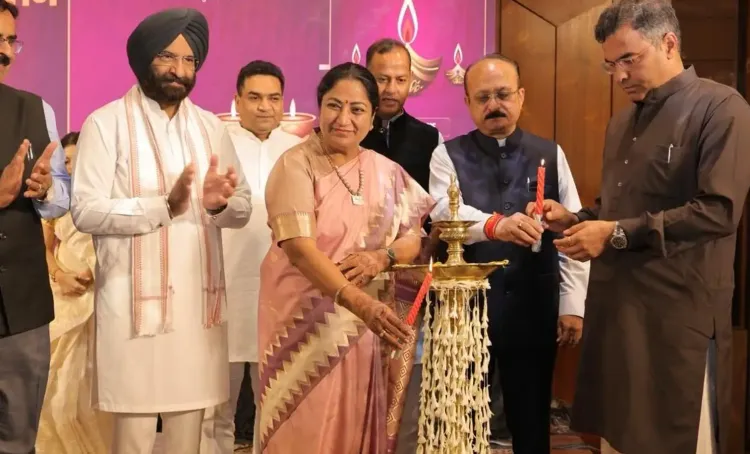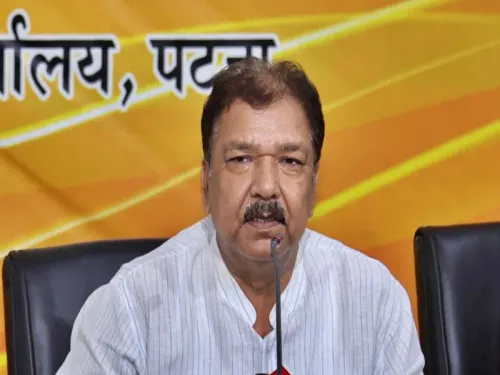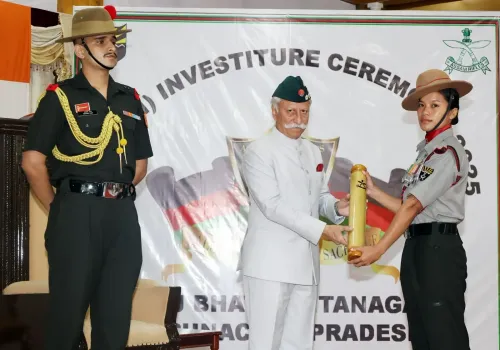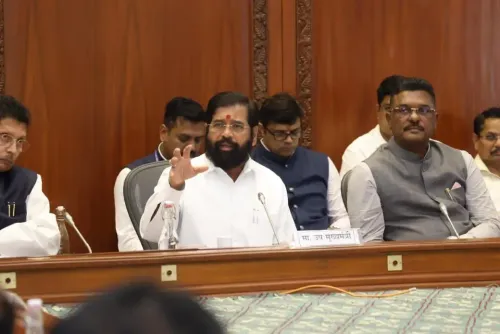Is Delhi CM Rekha Gupta Taking Bold Steps to Protect the Southern Ridge?

Synopsis
Key Takeaways
- The Southern Ridge is now designated as a reserved forest.
- This initiative aims to enhance environmental sustainability.
- Planting of indigenous trees will be a priority.
- Pollution control is a top priority for the Delhi government.
- Strengthening biodiversity and ecological balance is essential.
New Delhi, Oct 13 (NationPress) The Delhi government has announced the designation of 41 square kilometers of the Southern Ridge region as a reserved forest, as stated by Chief Minister Rekha Gupta on Monday.
This decision, made under the guidelines of the Indian Forest Act, 1927, represents a significant stride towards combatting pollution and enhancing the environment sustainably, according to her.
“Our aim is to transform Delhi into a modern capital characterized by a pollution-free, lush, and balanced ecosystem. This pivotal decision will not only safeguard Delhi’s greenery but will also contribute to cleaner air and a healthier environment for the generations to come,” she remarked.
By classifying an area as a reserved forest, stringent regulations are enforced, barring most activities unless explicitly authorized. This initiative also grants authority to a Forest Settlement Officer (FSO) to delineate boundaries.
The government is set to introduce indigenous tree species in these forested regions to maintain soil fertility and bolster environmental resilience, she noted in her statement.
She reiterated that the administration’s focus is to cultivate a modern capital that is green and free from pollution.
Environment Minister Manjinder Singh Sirsa indicated that this resolution will significantly aid in mitigating the city’s pollution.
Previously, CM Gupta criticized former administrations for disregarding the Ridge areas.
“The earlier governments failed to initiate any protective measures for these zones. Consequently, various sections of the Ridge faced encroachment, leading to a decline in greenery,” she stated.
CM Gupta emphasized that her government has consistently demonstrated a strong commitment to preserving and enhancing the environment and greenery in Delhi.
Ongoing discussions and collaboration among different departments have been crucial in reaching this notable decision.
She disclosed that declaring the Southern Ridge as a reserved forest is merely the first step; other Ridge areas in Delhi will soon follow suit, with preparations already in progress.
Furthermore, she mentioned that wherever there is vacant land within these reserved forest zones, indigenous and fruit-bearing trees will be planted to increase forest density.
This will include species such as neem (Indian Lilac), peepal (Sacred Fig), shisham (Indian Rosewood), mango, tamarind, and jamun (Black Plum). The positive outcome of this initiative is expected to keep the land fertile, enhance biodiversity, and maintain ecological balance.
She stressed that the Delhi Government is diligently working to protect and improve the city’s environmental quality and greenery.
According to the Chief Minister, the greenery lost due to years of neglect and encroachment in the Ridge areas is being restored through her government’s dedicated efforts.
The Delhi Government regards environmental preservation as a fundamental duty, essential for sustaining life.
Sirsa hailed this decision as a significant milestone for Delhi, asserting that pollution control and environmental protection are top priorities for the government.
He also instructed the Forest Department to enlist agencies with technical proficiency, proven expertise, and advanced machinery for tree transplantation to enhance survival rates.
This decision follows a review meeting with senior officials of the Forest Department to evaluate the ongoing tree transplantation efforts and their survivability.
“Previously, many agencies employed backhoe loaders for tree uprooting, which caused root damage and decreased survival rates. Moving forward, we will collaborate with agencies possessing verified technical skills and specialized machinery capable of lifting fully-grown trees with intact root systems. Our objective is straightforward: to provide every transplanted tree with a genuine opportunity to thrive,” Sirsa concluded.








